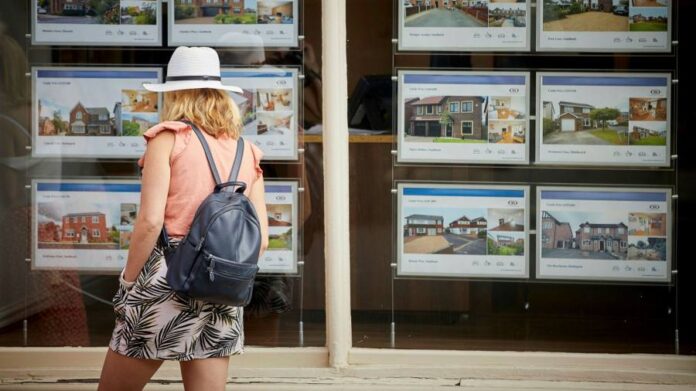Nearly half of first-time buyers last year delayed plans to buy a home, after this group was hit harder financially than other types of UK buyers in the pandemic, new research found.
Some 44 per cent of first-time buyers put their plans to buy on hold in 2020, as the public health crisis dealt them a double blow of rising house prices and constrained personal finances.
The research by Santander, the high street lender, which questioned 12,000 adults in the first three months of 2021, found that 31 per cent of buyers of all types had saved more money during the pandemic, at a time when opportunities to spend were curtailed by lockdown restrictions. However, among first-time buyers, the figure was just 17 per cent.
Younger buyers felt the effects of unemployment and reduced income more harshly during Covid-19, while many continued to grapple with the cost of renting, the report said.
“It’s even worse for first-time buyers now than it was two years ago, when we last did this report, and it was pretty bad then,” said Graham Sellar, head of business development at Santander Mortgages.
UK house prices rose by about 10 per cent in the year to May, according to the Halifax and Nationwide indices, fuelled by a stamp duty holiday and high demand for properties more suited to homeworking.
But this trend has been driven primarily by home movers, particularly those with high levels of housing equity. Sellar said: “It’s the next-time buyers and the buy-to-let landlords who have been the winners from the stamp duty holiday and the recent boom, rather than the first-time buyer population. Some of those who have moved have been replaced by landlords, not first-time buyers.”
The proportion of first-time buyers who said saving for a housing deposit was a barrier to buying jumped from 30 per cent in 2019 to 52 per cent in the latest report. First-time buyers in the survey were defined as those who had either bought a property since March 2020 or plan to in the next five years.
The advantage of low mortgage interest rates appears to have been heavily outweighed by the rise in house prices: whereas 15 per cent of first-time buyers in 2019 said borrowing enough based on their income was a barrier to buying, by 2021 some 30 per cent said it stood in their way. Regulation dictates that banks and building societies must limit mortgages to 4.5 times a customer’s income for 85 per cent of their mortgage book.
First-time buyers saw their mortgage options improve in April with the launch of the mortgage guarantee scheme. This provides government support for participating lenders to return to the market for 95 per cent loan-to-value mortgages — the type of higher risk lending favoured by first-time buyers but which dropped away in the pandemic.
Sellar said Santander had seen good take-up of its deals in the scheme among lower-income borrowers but he added that affordability was likely to remain a problem in view of rising values. “We were already seeing two first-time buyers needing to buy together to get to house prices in most areas, and that’s a little further away now.”
Santander made suggestions for government and the industry to tackle the higher barriers to first-time buyers, including directing stamp duty relief to regions where the need was greatest or allowing key workers to borrow their housing deposit through a loan scheme and repay it through their pay packet.
It also urged regulators to reconsider the parameters of the affordability “stress test”. This requires lenders to ensure borrowers could still make their monthly repayments if their interest rates were to rise three percentage points higher than the lender’s current standard variable rate.
“This level is disproportionately high and it’s unlikely any homebuyer will pay [it] in the foreseeable future,” the bank said.
Credit: Source link









